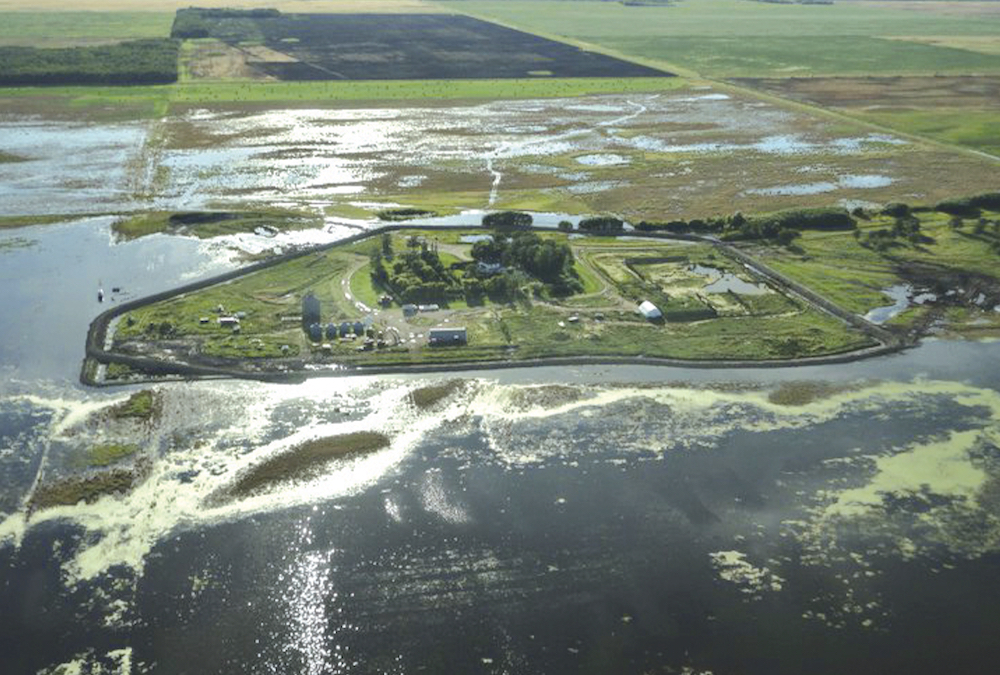LEGAL | Lawyer Anders Bruun says he’s confident the certification application will be successful
A class-action lawsuit against the Government of Canada and G3 Canada Limited, alleging millions of dollars of farmers’ money was improperly used to privatize the Canadian Wheat Board (CWB) in 2012, is a step closer to certification.
In Winnipeg Nov. 22 Court of Queen’s Bench Justice Chris Martin heard from lawyers representing the plaintiff and defence on how the case that began almost nine years ago should proceed.
“The purpose of the process here is so that the judge can ensure that this case moves forward in a way that serves the best interest of the farmers,” Anders Bruun, one of the lawyers for plaintiff, Brookdale, Man., farmer Randy Dennis, said in an interview Nov. 23. “So our proposal has to be one that we think is in the best interests of the farmers in terms of publicity on how they can claim money (if the case is won) and so forth. That’s the test. What’s the best way to move this case forward in the interests of farmers?
“Is it best to certify as a class action instead of requiring 70,000 farmers to sue individually?”
Based on a Manitoba Court of Appeal ruling Dec. 2, 2020, Bruun said he is confident the proposed class-action lawsuit seeking more than $160 million in compensation to farmers who sold grain through the CWB pool accounts in 2010-11 and 2011-12, will be certified.
“Now it’s a question of determining what the protocol for moving the action forward is going to be,” Bruun said.
“It’s essentially, what should the terms of certification be?”
If the class-action lawsuit is certified the plaintiffs will then have to prove the federal government and G3, which took control of the CWB’s assets in 2015, misused farmers’ money.
Why it matters: If the lawsuit is certified, allegations that the Harper Conservative government misused farmers’ money to privatize the Canadian Wheat Board will be tested.
The suit alleges the federal government improperly used $151 million that should’ve gone to farmers to cover some of the costs transitioning the CWB from a statutory, single-desk wheat and barley marketer, to a private grain company.
Of the $151 million, the suit claims $145.2 million ended up in the CWB’s contingency fund and $5.9 million was withdrawn from the CWB’s pool accounts.
The CWB set up a contingency fund to cover losses that occurred when farmers opted to price grain sales outside the CWB’s pools. It was normally funded when transactions earned more than the price farmers sold at. The fund was meant to break even over time.
“In order to fund the transformation of the board to a privately held entity, the defendants engaged in a course of conduct intended to reduce payments to farmers who had sold and delivered grain to the board during the class period and to increase the monies in the contingency fund,” the lawsuit alleges.
The CWB Act didn’t allow the wheat board to use money earned from its pool accounts for anything other than covering its operating expenses.
Gerry Ritz, who was agriculture minister at the time, said the government would cover the costs of transitioning the CWB to an entity that could be acquired by a private company.
“Nevertheless, the board improperly charged $5.9 million in transition costs to the pool accounts, which reduced the amount that was available to producers upon payment of their contracts during the 2011-12 crop year,” the claim alleges.
“The plaintiff pleads that the board breached its duty of good faith to the class (farmers who delivered to the CWB) by ignoring its obligations to the producers, and by allocating money to the contingency fund that otherwise would have been paid to the pool account contract holders.”
The case is simple, Bruun said. Under the wheat board act the CWB was obliged to buy all wheat “offered by a producer for sale and delivery.”
After the CWB sold the grain farmers delivered, the earnings went into the pool accounts. The CWB deducted the costs incurred in marketing the grain and by statute was obliged to return what was left to the farmers who delivered the grain.
“The case is really that simple, which may be why we’ve seen one feeble delay tactic after another (by the federal government’s lawyers),” he said.
The Conservative government ended the CWB’s single-desk marketing authority Aug. 1, 2012.
In 2015, G3 (Global Grain Group), newly formed to subsume the CWB, agreed to invest $250.5 million and in return received the CWB’s assets from the federal government.
G3 is a joint-venture firm majority owned by the state-owned Saudi Agricultural Livestock Investment Company (SALIC) and Bunge.
After taking over the CWB, the new G3, renamed G3 Canada Limited, was 50.1 per cent owned by SALIC and Bunge and up to 49.9 per cent potentially owned by farmers, depending on how much grain they delivered to the new firm.
Farmers were to earn $5 of G3 equity for every tonne.
G3 Canada had two shareholders — G3 Global Grain Group and the farmers’ equity trust.
Farmers who deliver to CWB own units in the trust and the trust owns shares in G3 Canada Limited.
After the farmers’ equity is fully allocated, or in seven years (2022), G3 Canada Limited can buy the equity, but isn’t obliged to.
In 2016 Reuters reported SALIC’s ownership within G3 Global Grain Group jumped to 75 per cent from 49 per cent, according to an April 28, 2016 Bunge filing.
















